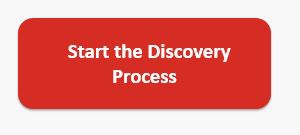 Mobile apps are the modern gold rush. Just about every entrepreneur or company has an idea for how they can become (or transform into) the next Uber or Yelp, but not everyone ends up making a mint developing a mobile app. What separates successful apps from failed attempts? As unsexy as it sounds, it comes down to asking (and answering) some key questions during the discovery and design process. Here are four questions that need to be answered before a business should begin work on a custom mobile app.
Mobile apps are the modern gold rush. Just about every entrepreneur or company has an idea for how they can become (or transform into) the next Uber or Yelp, but not everyone ends up making a mint developing a mobile app. What separates successful apps from failed attempts? As unsexy as it sounds, it comes down to asking (and answering) some key questions during the discovery and design process. Here are four questions that need to be answered before a business should begin work on a custom mobile app.
1.) Is there a market?
Your app idea may energize you, but will buyers eagerly download it from the Google Play or iTunes App Store? Intuition might suggest yes, but until you conduct careful marketplace research, the potential revenue for your application is just conjecture. How do you remove the guesswork before you dive into mobile app development?
One way is to spend the time needed to thoroughly review the market and your competition. Examine downloads, ratings, and reviews to gauge market demand and usage. Also, hands-on testing of similarly inspiring apps will provide a feel for the types of experiences that do and don’t attract users and generate revenue.
Whether you are already established in your sector or looking to break into one with your new idea, you will need to evaluate the industry as a whole. How is the industry growing? Is the industry catering to new types of mobile-savvy customers? Where are the opportunities to use mobile technology as the foundation for disruption? Answers to these questions will help entrepreneurs and business leaders decide which opportunities will be most lucrative and which may turn into dead ends.
2.) Who is the end user?
In addition to filling a void in the market, a successful mobile app is designed with an end user in mind. What motivates them? What are their pain points? Which features or prompts will lead to user engagement? The average app loses 90% of daily users in the first 30 days. Understanding their needs is the key to capturing and retaining your audience, and will impact whether your idea ends in success or frustration.
Your first impulse might be to go straight to the source, but end users are notoriously bad at expressing their true needs. They’ll tend to convey their wants or nice-to-have features, but might not be conscious of the pain points or motivators that will keep them returning to the well. Reverse engineering buyer pain points from what your mobile app will do isn’t the best idea either. In fact, it can create a false sense of understanding, limiting the impression your final product has on real-world buyers.
Check out our work on the Fautus app for context. The pain point was not a lack of high-quality photographers; it was that the potential buyers weren’t able to capture life’s spontaneous moments in full. What motivated the target buyers was that not only did Fautus allow them to request a nearby photographer on-demand, but they could do it affordably and get the results immediately.
3.) How will you monetize the app?
This is the multi-million dollar question. Downloads alone are not enough to get your full ROI. How do you effectively monetize your application so you can create cash flow to fuel your growth? There are many ways to produce app revenue for your business, but here are a few of the most common:
Advertising – Free apps get more initial downloads, but revenue needs to be generated somehow. Selling ad space can yield revenue, but good applications are judicious about when and where ads appear. If ads are too disruptive to the user experience, users are more likely to drop off. Always remember that a successful application feels like a natural extension of the user.
Freemium model – In this monetization model, all of the basic features are free, but next level features require users to upgrade to a paid (or premium) version of the app. The trick is to engage users without frustrating them about what they cannot do. That can be done through a trial period or providing additional paid features that make engagement more rewarding (mobile games are great at this).
Charging for services – Applications on the Uber model generate revenue this way. For every customer that an Uber driver picks up, a portion of that ride goes toward the platform itself and creates a more robust stream of compensation. Applications monetized this way are typically service oriented, so it’s crucial to identify during discovery whether monetizing your application in this way is even possible.
4.) What obstacles will be in the way?
First time app development offers plenty of obstacles that can trip you up. However, some of those challenges are common enough that you can anticipate and react to them before they happen:
Over-engineering your application – Early adopters need to be engaged, but they don’t need all of your anticipated features right out of the gate. Companies that develop a Minimal Viable Product (or MVP) are able to sooth the pain points of users, accelerate their release time, and prevent wasting time on features that users don’t need yet. You must stay focused on the core set of essential features that will make your app successful.
Acknowledging your talent gap – An IT generalist might be fine for a low-stakes application, but if the success of your business hinges upon an innovative and engaging user experience, the MVP needs to be top notch. Mobile development experts will bring a combination of product, business, and technical acumen along with deep expertise of the mobile development process to the project that generalists cannot match.
Launching your application – Once your mobile application has been developed, how will you market it to ensure that it gets in the hands of the target users? Do you have a way for users to easily give you feedback? Is the release date planned around a key event? These and other questions can determine the success of your launch and whether or not your hard work ultimately pays off.
Want to learn more about what to expect when developing a business application?
Related Articles





